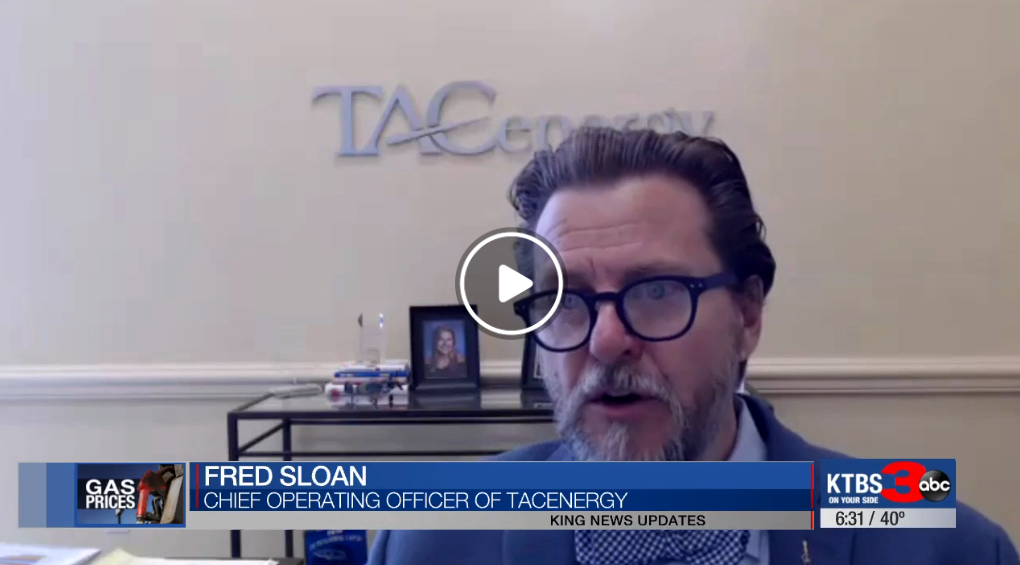Redevelopment of old Braniff base at Dallas Love Field heads toward finish

Redevelopment of old Braniff base at Dallas Love Field heads toward finish
Steve Brown, Real Estate Editor
CLICK HERE to read the original post on DallasNews.com >
Developers who are repurposing the historic Braniff Airways base at Dallas Love Field are getting closer to a grand opening.
Built in 1958, the former Braniff operations center on Lemmon Avenue has been vacant for years.
Last year, a development partnership that includes Lincoln Property Co., Dallas Cowboys owner Jerry Jones and aviation company The Arnold Cos. began a $140 million reconstruction of the three-story building.
The landmark mid-century modern building is being transformed into a retail, office and aviation center. The Arnold Co. said it has secured leases for the 120,000 square feet of hangar space that will open this summer.
"Phase two development of new hangar space is currently in the development and design stage in order to accommodate further interest from parties wishing to base at the newly renovated facility," Greg Arnold, CEO and chairman of TAC-The Arnold Cos., said in a statement. "We are excited about completing original hangar tenant commitments six months in advance of opening. Getting started on the expansion hangars will allow for additional interest in the facility, including transient and tenant opportunities."
Designed by noted international architects William Pereira and Charles Luckman and local designer Mark Lemmon, Braniff's old Love Field home was threatened with demolition when Dallas automotive dealer Randall Reed acquired the property. He bought in the development partners and is putting an auto retail facility on part of the campus.
The developers have preserved the front of the old buildings facing Lemmon. Out back, where the hangars and maintenance facilities were, the building has been carved up to create a huge internal court.
The Arnold Cos' TAC Air subsidiary is taking about 200,000 square feet of the complex for a commercial aviation center that will offer private hangars, an executive terminal and concierge and valet services. Part of the three-level glass-and-steel entry building will also house offices.
The developers are in talks with retail tenants for some of the renovated space in their new Braniff Centre. About 100,000 square feet of retail, restaurant, offices, the auto-dealer showroom, entertainment venues and hospitality facilities are in the works for the project.
The Arnold Cos. said it has selected Kip Simanek, a company veteran with more than 38 years of aviation experience, as general manager of its operations at Braniff Centre.
Latest Posts
Strategic Leadership Positions Bolster TACenergy Organic Growth Plans To Reach 3 Billion Gallons Annually
Expanding Opportunities Strengthens TACenergy Northeast Management Ranks
KTBS 3 Spotlight on TACenergy Leadership COO Fred Sloan - Sharing Thoughts on Changes in the Gas Market
KRLD CEO Spotlight on Greg Arnold and the Braniff Centre
Social Media
News & Views
View All
Strategic Leadership Positions Bolster TACenergy Organic Growth Plans To Reach 3 Billion Gallons Annually
Hazel Helm as Director of Supply and Randy Grizzle as Director, Sales & Marketing add depth to senior management team and support to key service areas
DALLAS (September 14, 2023) – TACenergy, one of the nation’s largest wholesale fuel sales companies headquartered in Dallas, Texas announced the appointment of two newly created positions supporting company growth plans to extend competitively priced product sales across the U.S.
As the Director of Sales & Marketing, Randy Grizzle brings over 25 years of U.S. fuel marketing experience leading sales development and data analytics for regional/national mid-stream energy companies. “The growth and high level of customer service TACenergy continues to bring to market reflects the activity of a very powerful team”, said Grizzle, “and I am excited to assist the company in achieving its highest potential.” Grizzle will put his focus toward continued business development opportunities, furthering current and future relationships with key national and regional companies in conjunction with developing processes and programs that enhance the foundation of company service levels.
Focusing on upstream supply relationships and contract development, Hazel Helm joins the company as Director of Supply and brings her 17-year multi-faceted strategic buying and analysis experience combined with a background from the refiner’s point of view to strengthen the national supply experience for TACenergy. Helm’s presence adds to existing business intelligence ensuring a well-managed national supply system with availability at over 800 U.S. terminals in the TACenergy network. Helm shared her outlook upon joining, “TACenergy is poised to lead the transformation of fuel distribution to include all energy resources and the vast long-term relationships with suppliers signifies its strength as the leader and I am excited to be a part of it.”
Fred Sloan, Chief Operating Officer of TACenergy shared, “The addition of Randy and Hazel comes at a time to support the growth trajectory we are experiencing and gives our team incremental depth extending our potential to reach new volume goals while continuing to lead the industry with the absolute best service levels in logistics and professional services.”
The TACenergy ‘Drive to 3 Billion’ goal is set to be achieved through organic growth and with the surety of our suppliers, carriers, and customers being treated with the respect and integrity that are the foundational tenets the company has maintained for nearly 60 years.
About TACenergy
TACenergy, a Dallas, Texas-based wholesale distributor of refined petroleum products is supported by 17 regional offices, one of the nation’s largest supply networks and over 100 employees across the 48 lower United States. Delivering customer value through customized fuel management programs, a 24/7 Supply & Logistics call center and a commitment to efficiency and accuracy, TACenergy exceeds industry standards to create sustainable growth. Annual volume exceeds two-and-a-half billion gallons for seven-and-a-half billion dollars in revenue. Ultimately, it’s the company associates and their passion for service that sets TACenergy apart.
Learn more about TACenergy, at www.tacenergy.com. Don’t Just Buy Fuel. Fuel Your Future.

Expanding Opportunities Strengthens TACenergy Northeast Management Ranks
Matthew Harrison Joins TACenergy In Its Brockton, Mass. Office As General Manager
BOSTON (November 1, 2022) – TACenergy, one of the nation’s largest wholesale fuel sales companies headquartered in Dallas, Texas announced the appointment and transition of Matthew Harrison to the role of General Manager for the company’s Northeast region. With the ongoing market changes and company growth across New England and the entire Northeast region, Harrison was hired to fortify the TACenergy position in the market, strengthen the team and look to the future, continuing to support suppliers and customers from Maine to New Jersey.
Taking on the leadership role for the Northeast region of TACenergy, Harrison brings over 15 years of industry sales experience in both the Northeast and Mid-Atlantic regions where he grew his career managing unbranded fuel sales and marketing for a leading terminal operator/distributor headquartered in the greater Boston area. “I look forward to joining a strong and well-established team and highly regarded group of fuel sales specialists at TACenergy”, said Harrison.
Fred Sloan, Chief Operating Officer of TACenergy shared, “The evolving growth and opportunities of the New England petroleum market have allowed us to expand the local regional leadership. With Matt’s proven industry experience coupled with the years of market knowledge of the current team, including Millie Platenik, Wayne Saven and Jay Reynolds, the TACenergy Northeast region will continue to set the standard for service and sales for existing and new customers.” Continuing their focus on New England markets, Platenik, Saven and Reynolds deliver the highest level of customer service to meet CEO, Greg Arnold’s vision for the company to provide the ‘best service and experience in the industry.’
Platenik confirmed, “I am excited to have Matthew join and take us to the next level. I can keep my focus on the New England customer base I have grown for the past couple of decades while Matthew will help us grow business throughout the entire Northeast and show our customers the true passion we have for the fuel business.”
Harrison will officially make his first appearance with the TACenergy leadership team next week as the new TACenergy Northeast General Manager at the Annual Fall Conference for SIGMA: America’s Leading Fuel Marketers national trade association.
About TACenergy
TACenergy, a Dallas, Texas-based wholesale distributor of refined petroleum products is supported by 14 regional offices, one of the nation’s largest supply networks and over 100 employees across the 48 lower United States. Delivering customer value through customized fuel management programs, a 24/7 Supply & Logistics call center and a commitment to efficiency and accuracy, TACenergy exceeds industry standards to create sustainable growth. Annual volume exceeds two-and-a-half billion gallons for seven-and-a-half billion dollars in revenue. Ultimately, it’s the company associates and their passion for service that sets TACenergy apart.
Learn more about TACenergy, at www.tacenergy.com. Don’t Just Buy Fuel. Fuel Your Future.

KTBS 3 Spotlight on TACenergy Leadership COO Fred Sloan - Sharing Thoughts on Changes in the Gas Market
Oil and Gas Prices Impacted by Tensions Oversees
Feb. 25, 2022
By JULIE PARR, KTBS TV
CLICK HERE to view read the original story on KTBS.com>
DALLAS, Texas - A Texas-based fuel supplier says gas prices will likely go up some more before they go down.
TAC Energy CEO Fred Sloan says crude oil prices have been going up over the past year. He says prices are about 35% higher than they were a year ago.
While the war in Ukraine has created some uncertainties in the energy market, Sloan says oil and gas supplies are not an issue for the U.S., and he doesn't believe gas prices will go up dramatically.
"The U.S. market is super elastic, and the U.S. crude supply is not at risk, refinery operations are not at risk, and the fuel that is at the gas station down the street will be there," said Sloan.
He says gas prices are expected to slightly increase in the spring and summer as usual, but as long as there's no major escalations in Europe, prices should slowly decrease of the course of the year.
"Now again, it will be volatile for a while, but the fact of the matter is there is no major supply demand influence that's going to cause prices in our region to get above where we are today," said Sloan.
Meanwhile, Sloan says the Ukraine invasion could have more of an impact on the global grain supply.
Russia and Ukraine together produce nearly a quarter of the world’s wheat.